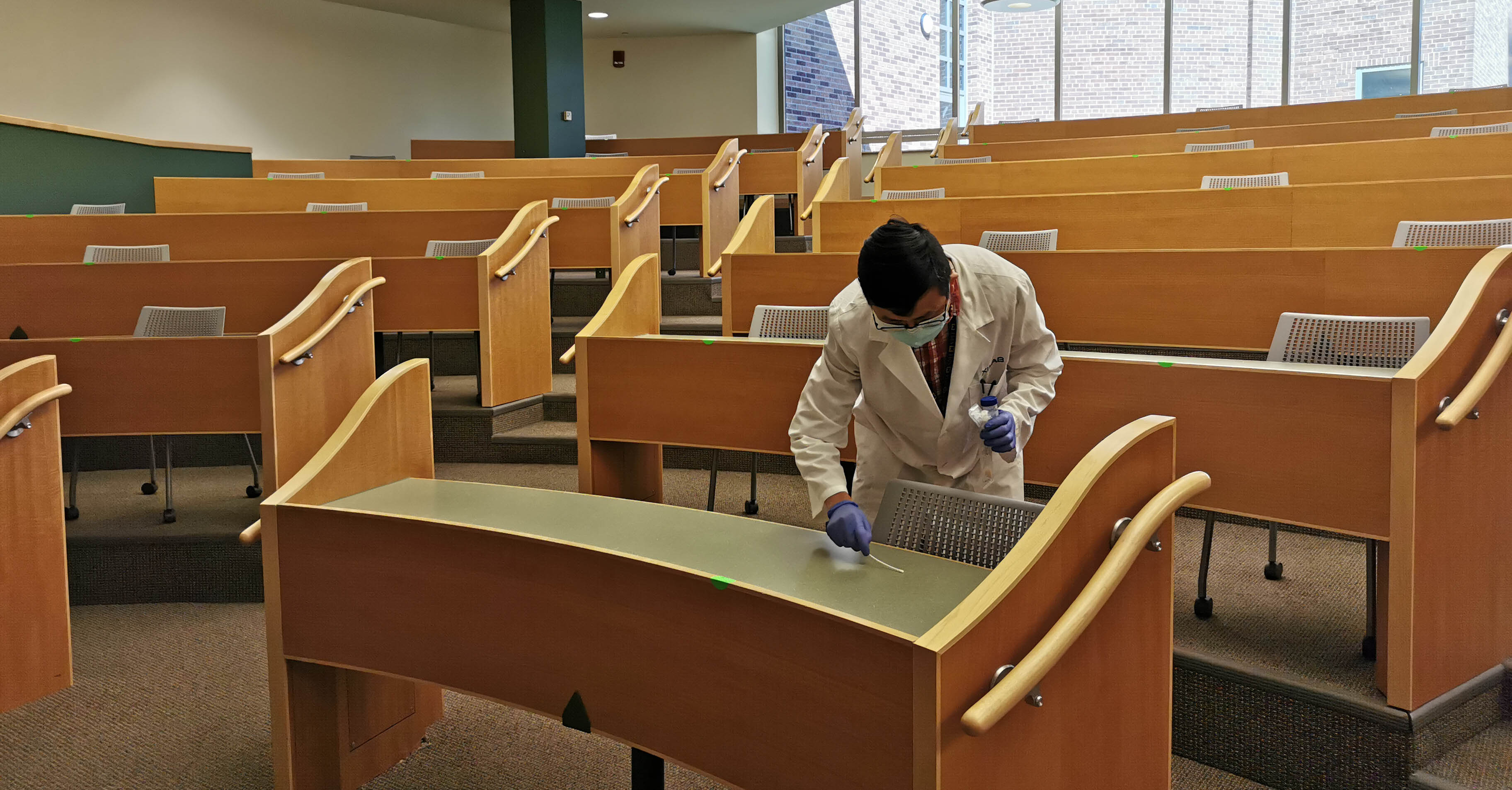At U-M, risk from surface contamination of COVID-19 was much lower than air transmission

New research from Michigan Public Health
Air transmission of SARS-CoV-2, the virus behind the coronavirus pandemic, was much higher than surface transmission at the University of Michigan, according to a study by researchers at the University of Michigan School of Public Health.
The two-year study looked at public spaces on the University of Michigan's Ann Arbor campus, including classrooms, rehearsal rooms, cafeterias, buses, gyms, student activity buildings, and ventilation and air ducts.
The risk of surface transmission was 1,000 times lower than airborne transmission, says Chuanwu Xi, professor of Environmental Health Sciences and Global Public Health at Michigan Public Health.
"We also found that the total case number of campus was significantly higher in weeks with positive environmental samples than in nonpositive weeks," said Xi, an environmental microbiologist whose research focuses on microbes in the environment and human health.
"Considering the recurring epidemics caused by respiratory infectious diseases in recent years, our study reinforces the relevance of integrating multiple environmental surveillance methods for modeling and risk assessment."
For air samples, Xi and colleagues used wetted wall cyclone bioaerosol samplers, which suck in large volumes of air using a pump and capture any virus particles in the air. For surfaces, researchers used swab kits.
In all, between August 2020 and April 2021, the researchers collected 256 air samples and 517 surface samples. They found that positivity rates were 1.6% and 1.4%, respectively, and that probability for infection was about 1 per 100 exposures to SARS-CoV-2 aerosols through inhalation and as high as 1 in 100,000 from contaminated surfaces in simulated scenarios.
The researchers say because the study was conducted during lockdowns in a college campus, no samples were collected in spaces with large gatherings of people and some samples were only collected when few people were present. Also, extrapolation to the general population and health care settings should be done with caution, they say.
"Our results are a valuable addition to our understanding of infectious diseases and mitigation efforts during this pandemic, and can help prepare us for future outbreaks of respiratory diseases with similar transmission mechanisms," said Rick Neitzel, professor of Environmental Health Sciences and Global Public Health at Michigan Public Health.
"This is another layer of sophistication to evaluate major routes of transmission and to identify physical spaces where risks are higher and control measures in such space are essential and more effective to reduce the spread of the virus."
In addition to Xi and Neitzel, authors included Xin Zhang, Jianfeng Wu, Lauren Smith, Xin Li, Olivia Yancey, Al Franzblau and Tim Dvonch, all with the Department of Environmental Health Sciences at Michigan Public Health. The results are published in the current issue of Journal of Exposure Science and Environmental Epidemiology.
Image caption: Jianfeng Wu, a research fellow at U-M's School of Public Health, collects samples of surfaces around U-M's Ann Arbor campus. Photo credit: Chuanwu Xi
